Looking for an authentic taste of Mexico? What to order at a Mexican restaurant can be an exciting exploration, especially for the LGBTQ+ community seeking welcoming culinary experiences, and gaymexico.net is here to guide you. We’ll help you discover genuine flavors and dishes, ensuring a memorable and delicious adventure that respects tradition and embraces diversity, creating an inclusive dining environment.
1. Aguachile
Aguachile is a ceviche dish that hails from Sinaloa. Raw shrimp cured in lime juice is fresh and spicy. If the chef isn’t using the freshest ingredients, the dish won’t be refreshing, spicy, and acidic. It is one of the best things on a hot summer day.
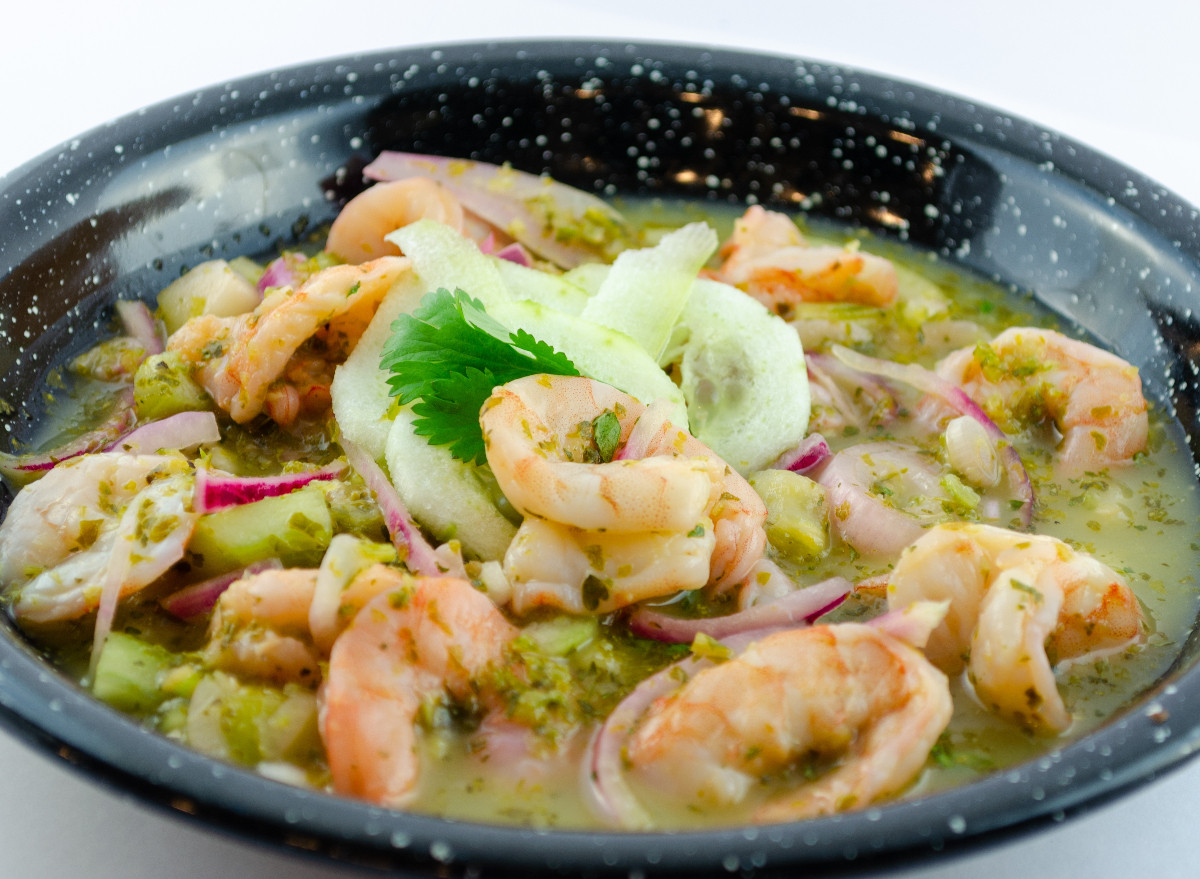 Aguachile shrimp dish with lime
Aguachile shrimp dish with lime
2. Huitlacoche
Huitlacoche, or “corn smut”, is a fungus that grows on corn. It is a delicacy that combines sweet and tangy flavors and is great for quesadillas, empanadas, and creamy sauces.
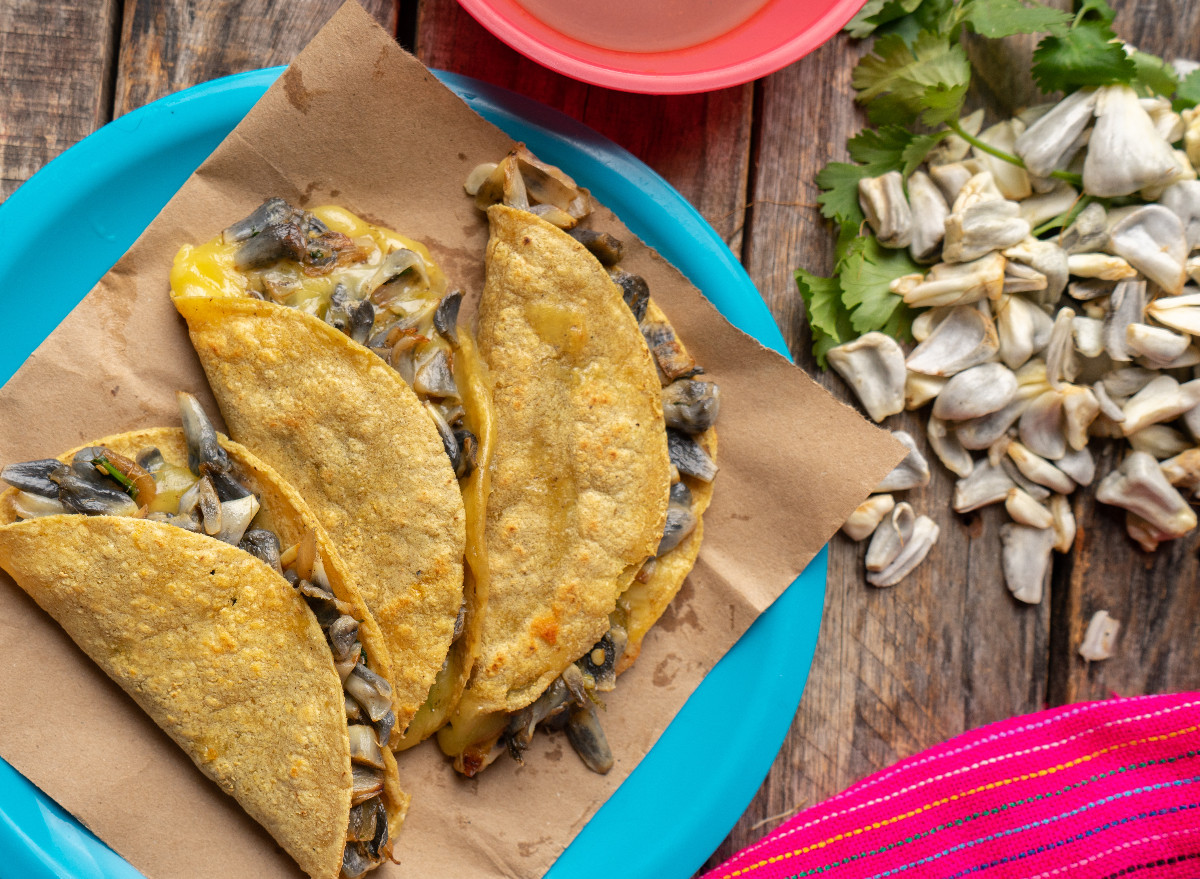 Huitlacoche corn smut tacos close-up
Huitlacoche corn smut tacos close-up
3. Masa and Tortillas
Tortillas and salsa are essentials at any Mexican restaurant. Tortillas are the transport of almost any dish, if the tortilla is good, you’re already 50% there. The secret to a perfect taco is the tortilla. Nixtamalization is a traditional process in Mexico and Central America where the corn is treated with lime, cooked, dried, and ground to produce the flour we use to make tortillas.
 A woman making traditional corn tortillas
A woman making traditional corn tortillas
Beyond tacos, look for tlacoyos, sopes, tamales, gorditas, salbutes, panuchos, tlayudas, tetelas, and memelas. The variations can be endless depending on the region of Mexico being represented in the restaurant you are visiting.
4. Beans
The true mark of an excellent meal is the beans. Much like corn, beans come in different varieties, colors, textures, cooking methods, and spices. Beans cooked with avocado leaf are earthy and anise-y. Epazote is one of those herbs that immediately takes you home.
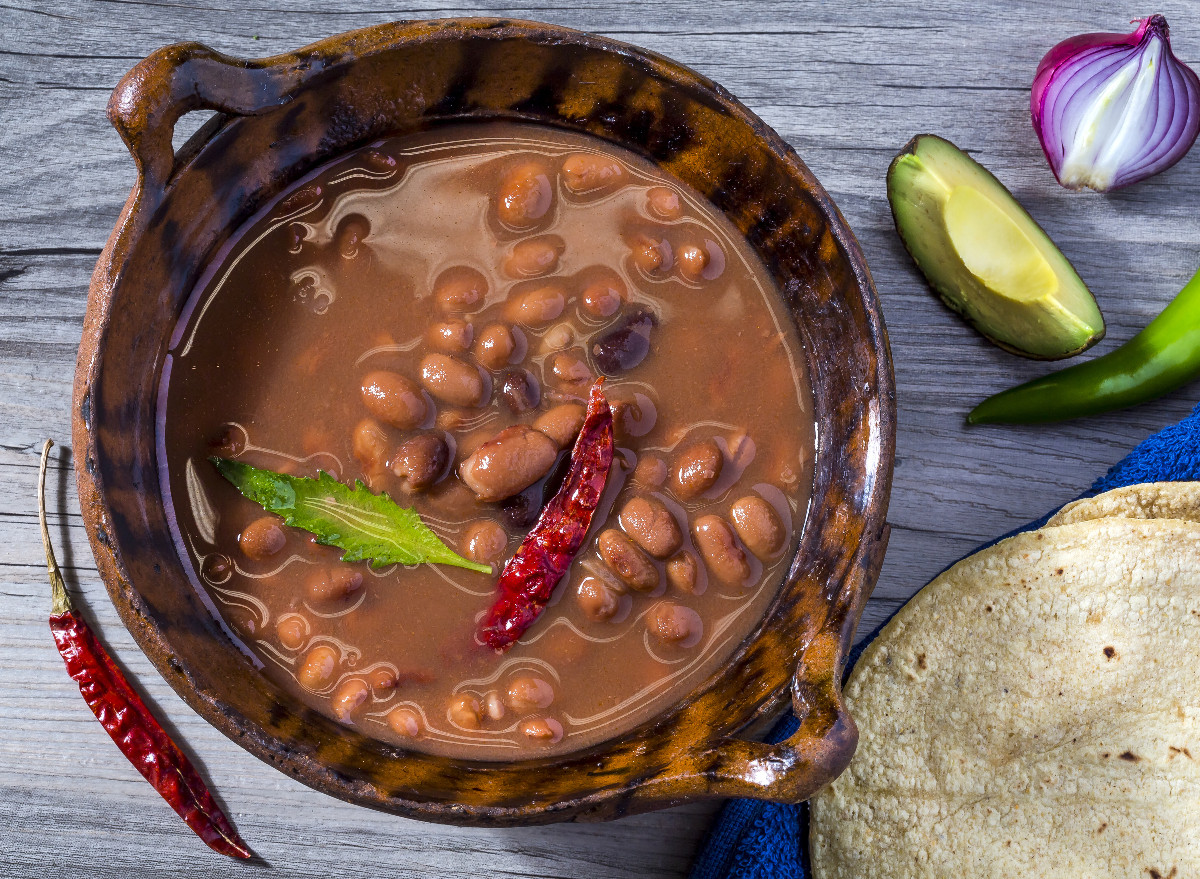 Mexican baked beans close-up
Mexican baked beans close-up
5. Unique Tacos
Tacos distinguish an authentic taco from something with Doritos in the name. Tacos that are unique to a chef or restaurant are worth the order. Birria tacos are a traditionally spicy Mexican beef or goat stew that’s slow-cooked until the meat is tender and succulent. Beef tongue tacos demonstrate a true understanding of cooking technique and how to handle a tough cut of meat. The meat should be moist and with an almost melt-in-your-mouth texture.
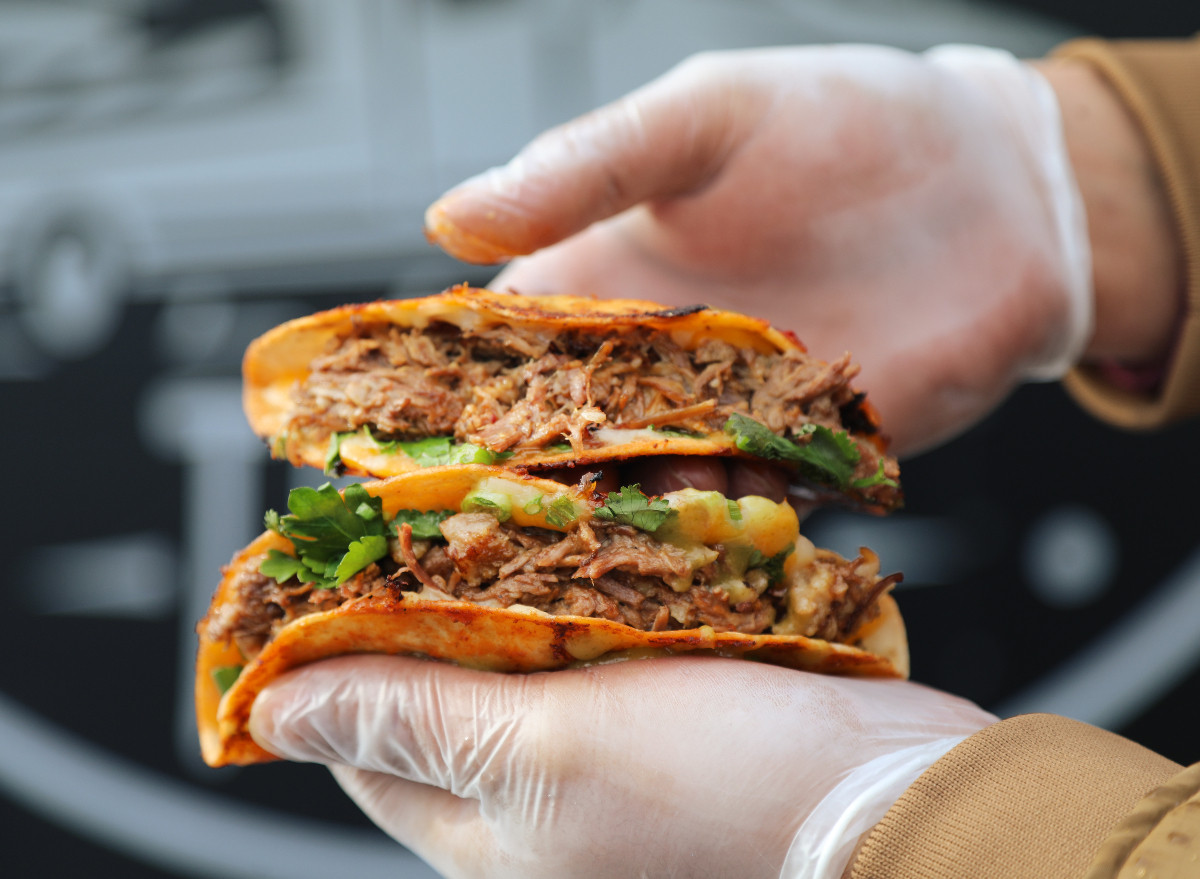 Mexican birria tacos with cilantro and onion
Mexican birria tacos with cilantro and onion
6. Good Salsa and Sauces
Salsas and housemade sauces can tell the chef’s flavor profile and the origins of their cooking. Mexican chefs cook their regional food proudly. Look for a delicious, flavorful, and colorful salsa to start. If the salsa doesn’t bring much to the table, then it leaves little desire to move forward with the rest of my dining experience.
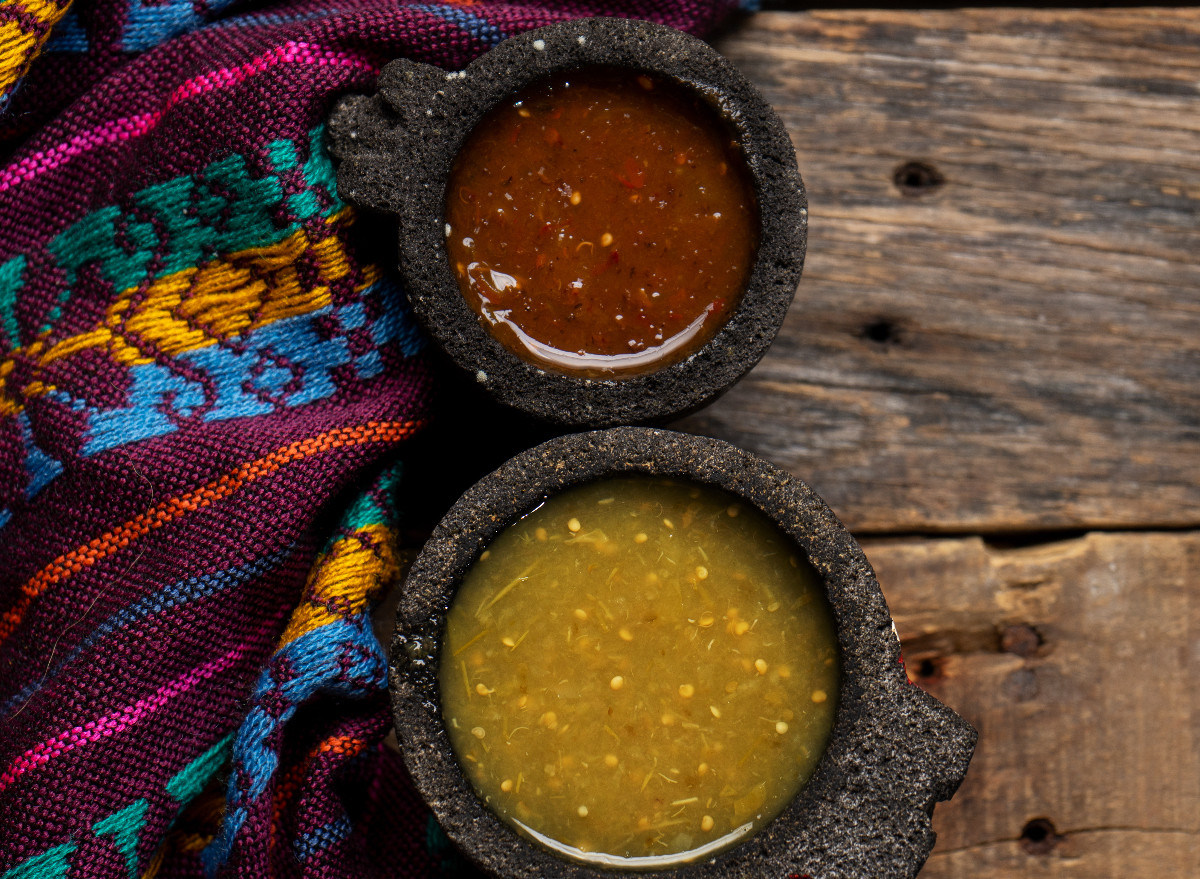 Variety of authentic Mexican salsas and sauces
Variety of authentic Mexican salsas and sauces
7. Mole
Mole is one of the most complex dishes in the Mexican repertoire. Depending on the region of Mexico the restaurant represents, it will have different spices. Mole should be perfectly balanced and well-seasoned without any one ingredient overpowering the overall profile. If it contains Mexican chocolate or Mexican canela (Ceylon cinnamon), it should be just a hint, not the main flavor. Many moles use warming spices like allspice, cinnamon, and clove, along with other Mexican spices like burnt or charred corn tortillas, and burnt garlic. A few of the darker moles have chocolate, with origins that go back to the Aztecs.
 Authentic Mexican mole sauce on a plate
Authentic Mexican mole sauce on a plate
8. Enchiladas
Cheese enchiladas are simple. They are good or they are not good. They can be different or unique and still be great, but the dish is so simple it has to be well thought out. You can determine details in the cheese, the sauce, the rice and beans, and even the temperature of the plate. Each of these questions says a lot about an operation and what they prioritize.
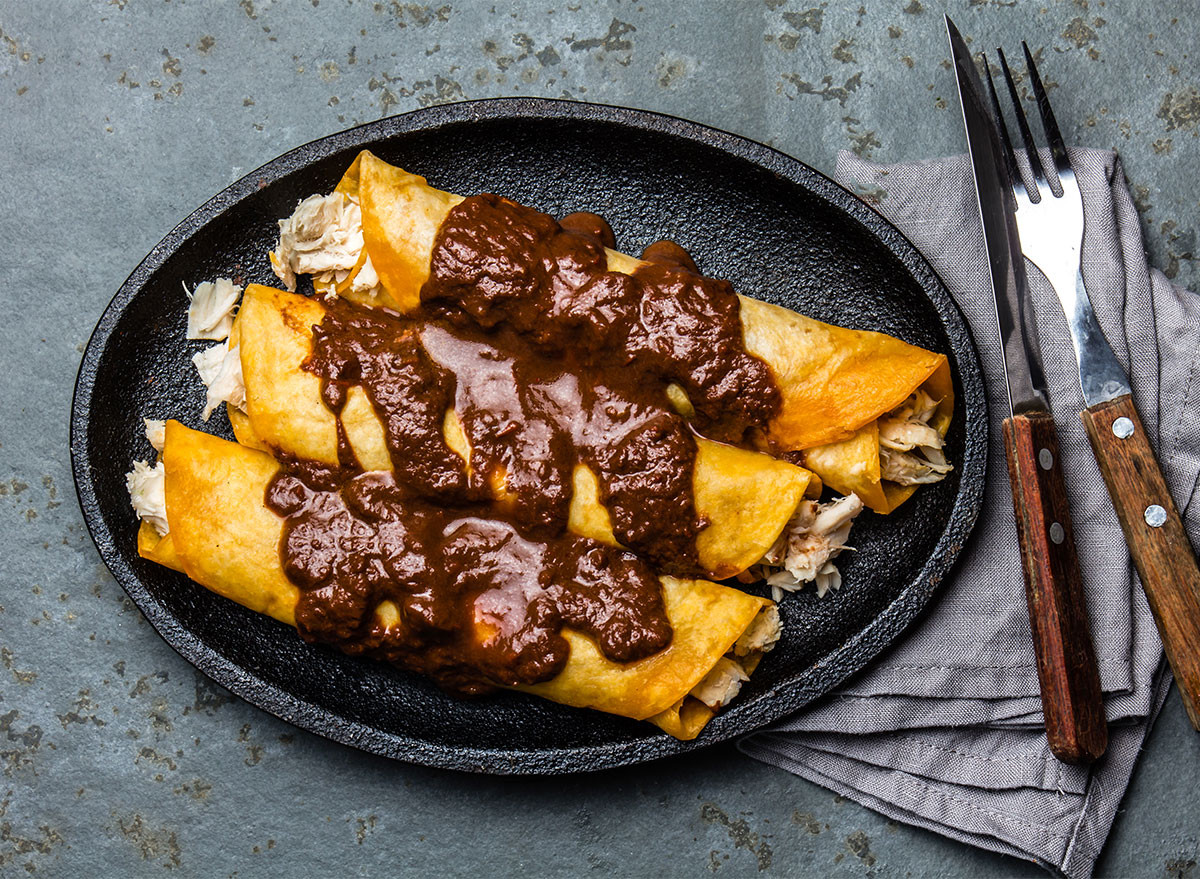 Enchiladas with mole sauce and salsa
Enchiladas with mole sauce and salsa
9. Guacamole
Guacamole should always be served fresh and made to order, not cold. The avocado, onions, and jalapeños should be sharp and fragrant with strong flavors in the lime juice, color in the avocado, and taste in a recently diced onion. It is fresh enough that you still get the tang from the lime juice? Are the onions still crunchy? Is there enough salt? Is it bright green? Is there cilantro in it? Is it chunky like someone made it by hand or is it puree? Do they commit the big sin and put tomato in their guac to make it cheaper?
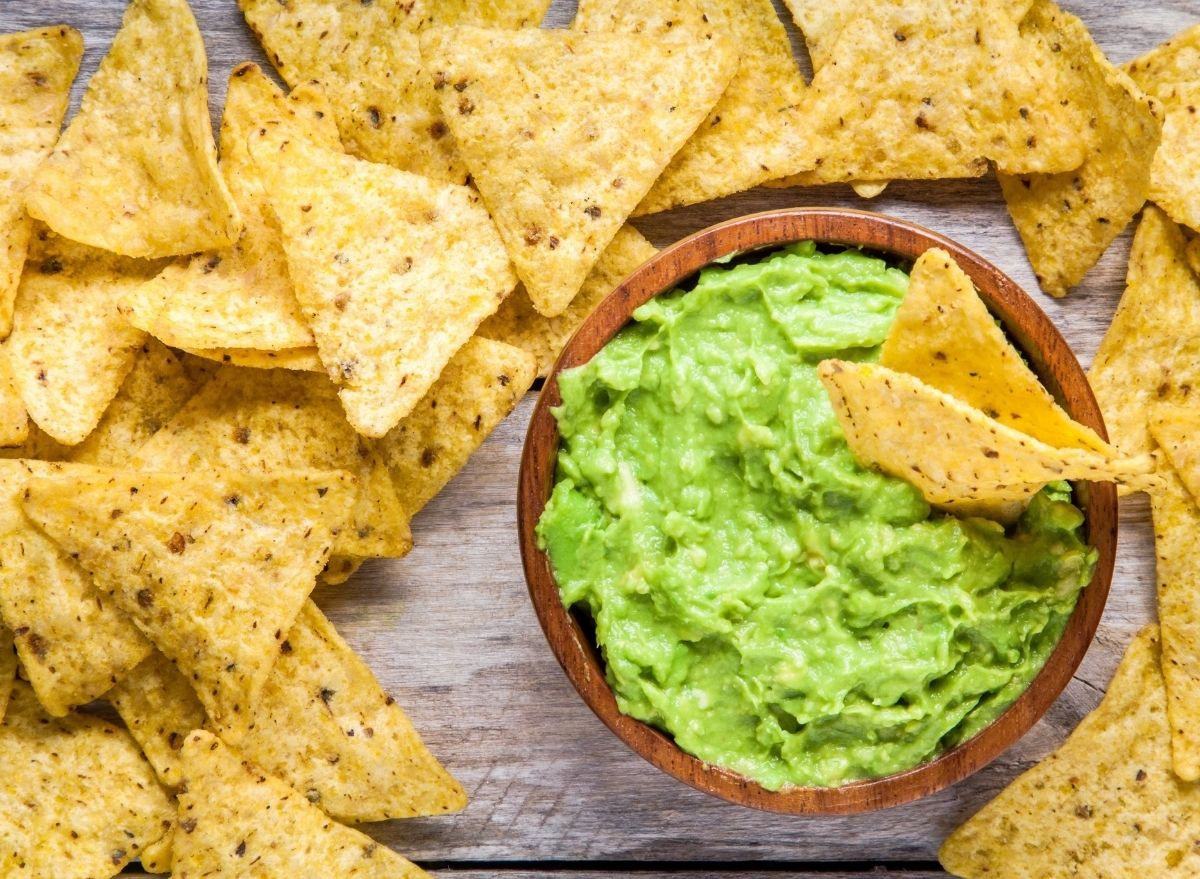 Bowl of guacamole with tortilla chips
Bowl of guacamole with tortilla chips
10. Pozole
Pozole is a hearty hominy stew, often simmered with various meats and spices. It’s served with braised pork shoulder or chicken thigh, and authentic toppings like lettuce, radish, onion, lime, and avocado. It comes in verde, rojo, negro, and pinto variations.
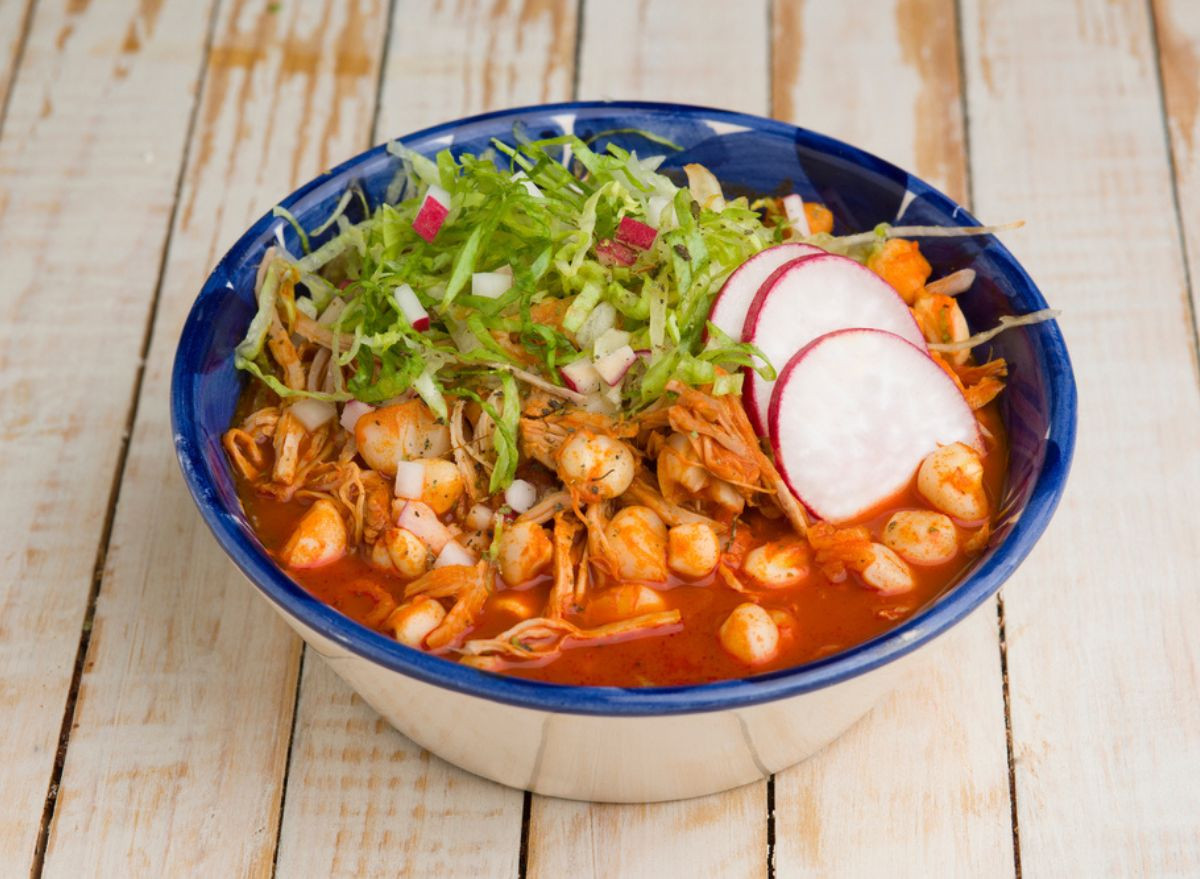 Authentic Mexican pozole stew
Authentic Mexican pozole stew
11. Authentic Margaritas
Margaritas should have tequila that you would sip neat. Taste the agave; notes of citrus, pepper, vegetal and bright. I am not a fan of blanco tequilas that taste like sweet vanilla. Fresh lime juice is essential. If it’s a store-bought mix, I’m not so inclined to imbibe. Salt highlights and balances the spirit, citrus, and sweetness.
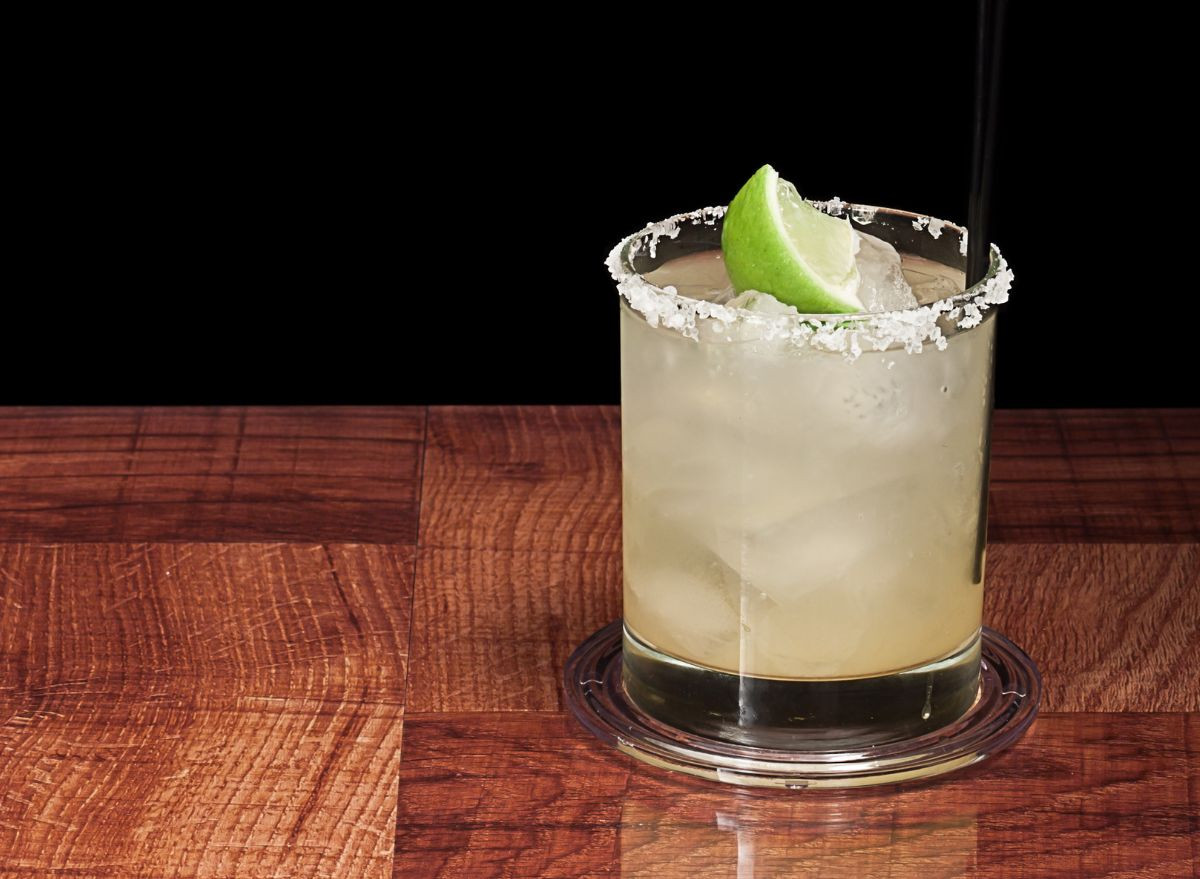 Margarita on the rocks with Patron tequila
Margarita on the rocks with Patron tequila
1. What Mexican Dishes Showcase Regional Ingredients?
Authentic Mexican cuisine varies greatly by region. Dishes featuring named native ingredients like hoja santa, epazote, cilantro, achiote seeds, and dried peppers such as guajillo, ancho, de arbol, and morita are sure to represent their origin. These ingredients contribute depth and natural flavor.
2. How Can I Spot Authentic Mexican Restaurants?
Look for restaurants that focus on fresh, high-quality ingredients and avoid manufactured or canned products. The atmosphere, including the welcome and vibe, is also important. Traditional items like queso fundido, carnitas, or chilaquiles can also be a good sign. According to Abner Peralta, chef de cuisine of Alejandra’s Fine Mexican Food and Cantina in San Diego County, Mexican cuisine should reflect flavors, aromas, and spices even on the simplest dishes.
3. What Should I Consider When Ordering Tacos?
The perfect taco includes a good tortilla. Chef Anthony Sitek, owner of Cincinnati’s Crown Restaurant Group and Crown Cantina, likes to use scratch-made tortillas for the perfect tacos, and corn that is locally sourced. Nixtamalization is a traditional process in Mexico and Central America where the corn is treated with lime, cooked, dried, and ground to produce the flour we use to make tortillas.
4. Why Is Masa Important In Mexican Cuisine?
Masa is a core element, used to make tortillas and other maize-based dishes. Different variations of corn masa beyond tortillas indicate regional Mexican flavors. Look for tlacoyos, sopes, tamales, gorditas, salbutes, panuchos, tlayudas, tetelas, and memelas.
5. How Can I Evaluate The Authenticity Of A Mole Dish?
Mole is one of the most complex dishes in the Mexican repertoire. Depending on the region, it will have different spices. It should be balanced and well-seasoned without any one ingredient overpowering the profile. Brent Allison of Matador Restaurants in Portland, Ore., notes that many moles use warming spices like allspice, cinnamon, and clove, along with other Mexican spices like burnt or charred corn tortillas, and burnt garlic.
6. What Should I Look For In Authentic Guacamole?
Guacamole should be served fresh and made to order, not cold. The avocado, onions, and jalapeños should be sharp and fragrant with strong flavors in the lime juice, color in the avocado, and taste in a recently diced onion. According to Roberto Santibanez, chef of Fonda in New York City, these are the elements of an authentic guacamole.
7. How Can I Tell If A Margarita Is Authentic?
An authentic margarita uses tequila that you would sip neat, showcasing agave notes of citrus, pepper, vegetal, and brightness. Fresh lime juice is essential. Courtenay Greenleaf Torren, beverage consultant for Houston-area Mandito’s Tex-Mex and ARMANDOS, emphasizes the importance of fresh, balanced ingredients that complement each other.
8. What Is Aguachile And Why Is It Authentic?
Aguachile is a ceviche dish that hails from Sinaloa, made with raw shrimp lightly cured in lime juice and a good amount of spice. Chef Omar Rodriguez of Oyamel Cocina Mexicana in D.C. loves it because it is ingredient-driven, and if the chef isn’t using the freshest ingredients, the dish won’t be refreshing, spicy, and acidic.
9. What Is Huitlacoche And How Is It Used?
Huitlacoche, also known as “corn smut,” is a fungus that grows on corn. It is a delicacy that combines sweet and tangy flavors and is used in tamales, stews, quesadillas, and sauces. Claudio Hotter, executive chef of Mexico’s Marquis Los Cabos, recommends ordering it in quesadillas.
10. Why Are Beans An Important Indicator Of Quality?
The true mark of an excellent Mexican meal is the beans. Beans come in different varieties, colors, textures, cooking methods, and spices. According to Christian Irabien, chef of Amparo Fondita in D.C., beans cooked with avocado leaf are earthy and anise-y.
What Are The Benefits Of Using Gaymexico.Net For LGBTQ+ Travelers?
Gaymexico.net offers comprehensive travel guides, lists of LGBTQ+-friendly establishments, updates on legal and social issues, and community connections. For LGBTQ+ travelers, this means finding safe and welcoming spaces, staying informed about local laws and customs, and connecting with the LGBTQ+ community in Mexico.
What Are The Travel Challenges Faced By LGBTQ+ Individuals in Mexico?
LGBTQ+ individuals may face challenges such as discrimination, lack of legal protections in certain areas, and varying levels of social acceptance. According to Human Rights Watch, while Mexico has made strides in LGBTQ+ rights, disparities remain across different regions.
What Makes A Destination LGBTQ+-Friendly?
An LGBTQ+-friendly destination offers safe and welcoming spaces, inclusive laws and policies, and a visible and supportive LGBTQ+ community.
How Can Gaymexico.Net Assist With Safe Travel?
Gaymexico.net provides up-to-date information on local laws, customs, and potential safety concerns, as well as resources for connecting with local LGBTQ+ organizations and support networks. Additionally, Gaymexico.net also list establishments with good reputation and offer great support to LGBTQ+ individuals
What Legal Protections Exist For LGBTQ+ People In Mexico?
Mexico has made significant progress in LGBTQ+ rights, including legalizing same-sex marriage nationwide and enacting anti-discrimination laws. However, enforcement and awareness of these protections can vary by region. According to the UCLA Williams Institute, in July 2025, Mexico is one of the leading countries in Latin America for LGBTQ+ rights.
Are you ready to explore the authentic tastes of Mexico? Gaymexico.net provides detailed travel guides, recommendations for LGBTQ+-friendly restaurants, and insider tips to make your culinary journey unforgettable. Discover the vibrant culture and delicious dishes that await you.
Explore our guides and connect with the LGBTQ+ community in Mexico at gaymexico.net!
Address: 3255 Wilshire Blvd, Los Angeles, CA 90010, United States.
Phone: +1 (213) 380-2177.
Website: gaymexico.net.